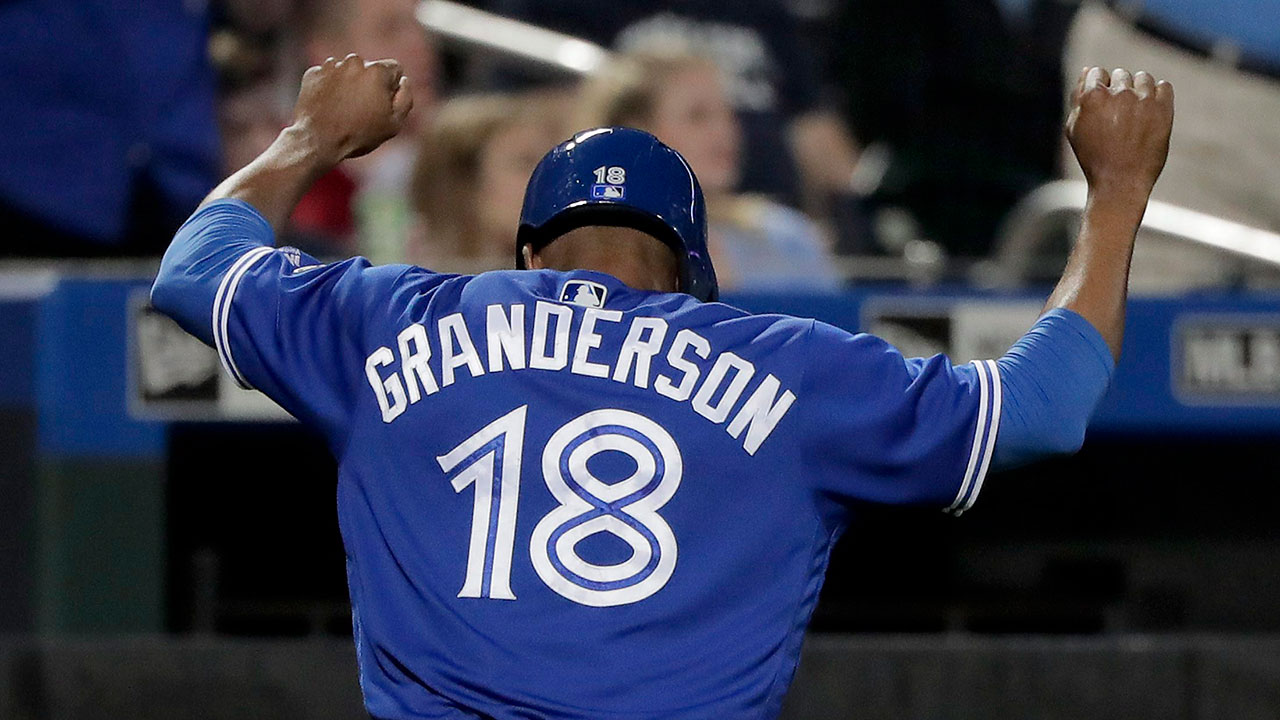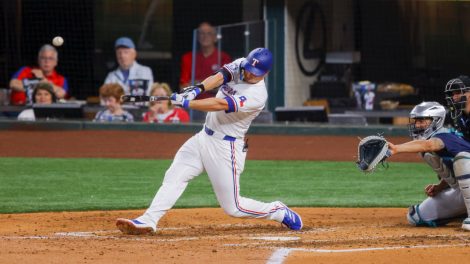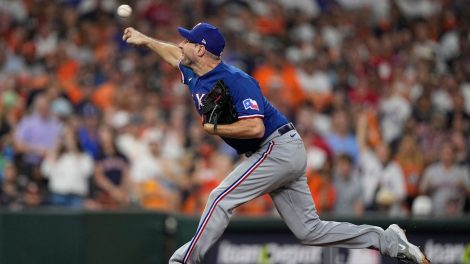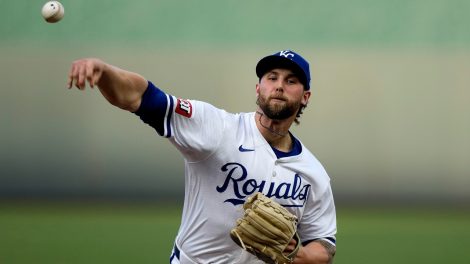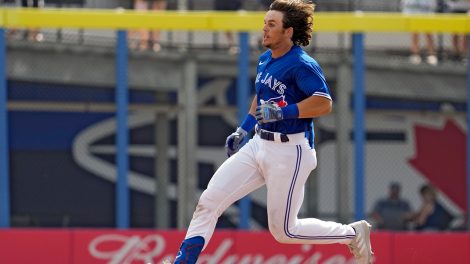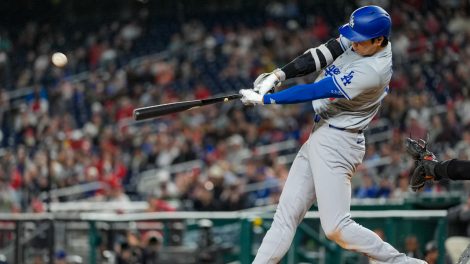KANSAS CITY – What began as a simple conversation about cleats led to a team trip involving roughly half of the Toronto Blue Jays’ roster.
Back in April, Kevin Pillar asked Curtis Granderson about the cleats he had chosen for Jackie Robinson Day. One shoe paid tribute to Robinson, who famously broke the MLB colour barrier with the Brooklyn Dodgers in 1947. The other commemorated Larry Doby, a lesser known player who became the first African-American to appear in the American League later that same season.
As Granderson showed off the cleats, Pillar realized something: “I didn’t know who Larry Doby was.”
At that point, Granderson turned to Pillar and asked if he’d ever visited the Negro Leagues Baseball Museum. When Pillar said no, Granderson looked at the calendar and realized the Blue Jays would be playing in Kansas City later in the summer. A plan took shape, and as others heard about it, Granderson made room for more visitors.
“Next thing you know we had a full bus,” Granderson said. “Some guys are like ‘is it mandatory?’ I don’t want to say it’s mandatory, but I’d highly recommend it.”
[relatedlinks]
Granderson first visited the museum in 2006 with fellow Detroit Tigers Craig Monroe and Marcus Thames plus broadcaster Rod Allen. He kept going back when possible, but hadn’t visited recently because he played in the National League from 2014-17.
That led to Tuesday’s morning outing, which included much of the Blue Jays’ roster plus coaches and support staff. Along with Pillar, Marcus Stroman, Devon Travis and Teoscar Hernandez were among those who enjoyed a personal tour by the museum’s president, Bob Kendrick.
“An incredible museum,” Pillar said. “It was a really cool experience and I think a lot of us left there with a greater appreciation of not only the Negro Leagues, but the history of this game.”
“They played for the love of the game,” Pillar added. “A lot of these guys didn’t really see a future in the major-leagues, the way I did growing up. As a kid I wanted to play in the major-leagues and there was somewhat of a clear path there. These guys were strictly playing for the love of the game, not knowing if there was ever opportunity.”
As the tour unfolded, the Blue Jays heard about the likes of Satchel Paige and Josh Gibson. Some stories, like the one where Cool Papa Bell turns off the lights and makes it into bed before the room gets dark, seem almost mythical. Still, as Granderson says, there’s some truth to them all.
“You find out some of these stories were real,” Granderson said. “Just a little (embellished). It makes you want to go back and watch it.”
Pillar was similarly impressed by the tales he heard about Negro League greats.
“You hear this guy was a combination of Lou Gehrig and Babe Ruth and you’re like ‘wow, that’s a pretty talented guy,’” he said. “Unless you’ve set foot in that baseball museum or you’re some sort of baseball historian, you probably don’t know about these guys.”
For example, legend has it that Gibson, the powerful Hall of Fame catcher, hit a ball out of old Yankee Stadium. As someone who has hit his share of homers in the Bronx, Granderson was impressed.
“Aaron Judge and (Giancarlo) Stanton are probably the two (comparable) monsters right now and they’re not even close,” Granderson said. “Judge got close to getting it out of the stands at the new Yankee Stadium, but that’s still not out of the entire stadium.”
[snippet id=3966765]
On the pitching side, Granderson enjoyed the story about Paige, who threw so hard that his team brought in military speed tracking equipment to determine some specifics.
“And Satchel threw a pitch and everyone goes ‘oh my god, did you see what you did?’ He goes, ‘no.’ They go ‘we clocked you at 100 m.p.h.’ He goes, ‘Really? If I’d have known, I could have thrown way harder than that.’”
Plus, as Pillar noted, Paige didn’t even know his age for much of his career.
Yet alongside those fun stories, there’s the reality that the Negro Leagues mostly existed at a time that African American players were not accepted on major-league rosters. Even today, Granderson’s impressed by the inclusivity and diversity of the Negro Leagues.
“As we start talking about gender equality issues in 2018, they had women owners,” he said. “They had women players. Not only that, they had teams playing against international countries (such as Japan) first before major-league baseball did. Things we’re still grappling with today, they were doing it. They were doing what we’re still trying to do to this day.”
By the time the tour wrapped up, Granderson and his teammates looked over and realized their ride was waiting.
“Oh yeah, the bus,” he realized. “But no one was ready to go yet. That’s a good sign.”

